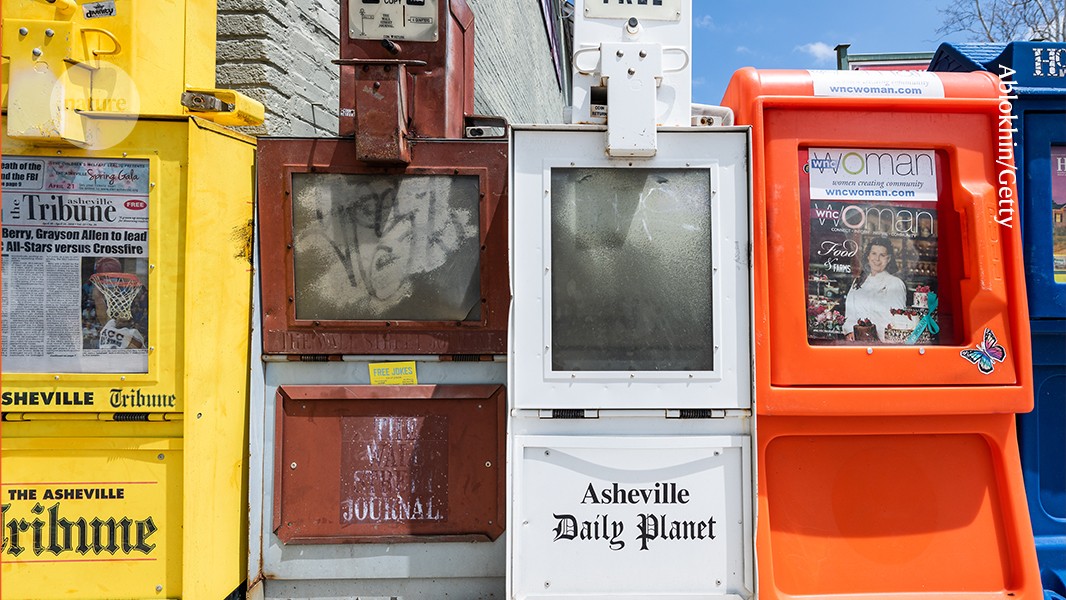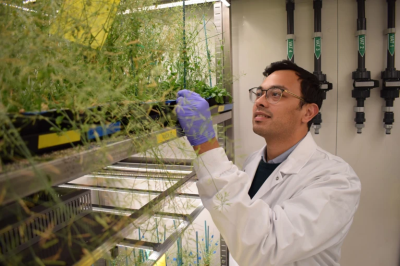
Local newspapers are a great way for scientists to show their neighbours how important science is.Credit: Ablokhin/Getty
Donald Trump’s second term as president of the United States is still less than 100 days old, yet his administration has created an unparalleled cacophony of news in that short space of time by, among other things, freezing federal grants and foreign aid, quitting the World Health Organization and purging diversity, equity and inclusion programmes.
But neuroscientist Jessica Cantlon wants to cut through the noise with yet more news. It’s a fight-fire-with-fire strategy.
In March, Cantlon, who researches the mathematical-processing capabilities of human children and other young primates at Carnegie Mellon University in Pittsburgh, Pennsylvania, co-founded the Science Homecoming project in response to widespread research-funding cuts.
The Trump administration has slashed billions of dollars from the US National Institutes of Health’s research budget, disrupting Cantlon’s own funding.
The idea behind Science Homecoming is that scientists across the United States get in touch with the local newspaper where they grew up and make the case for why funding science is important to those communities.
How sharing your science in an opinion piece can boost your career
The organization is run by Cantlon, along with her co-founder Steven Piantadosi, a computational cognitive scientist at the University of California, Berkeley, and three other volunteer editors.
Its website hosts an interactive map of the United States, where scientists can find local newspapers and read the pieces that fellow researchers have already published. Science Homecoming also offers tips for how to get in touch with local editors and pique their interest. In the month since the project was launched, more than 100 opinion pieces and editorials have been published, both in print and online.
“It’s amazing. And they’re from all different fields of science. We’ve even had two Nobel laureates. The response has been robust, and it’s come from all career levels,” says Cantlon. “Bit by bit, our message as scientists is getting through to these smaller communities.”
The roughly 6,000 local newspapers in the United States still have a strong readership.
Print subscriptions might have fallen in the past decade, but the numbers are now beginning to stabilize. Traffic to local-newspaper websites has also been growing at a healthy pace since 2014. In a country as vast at the United States, it seems that residents value keeping up with what’s going on in their communities. The same cannot be said for national newspapers, whose decline in readership is ongoing.
Cantlon tells Nature how and why she launched Science Homecoming.
What made you think that approaching local newspapers was the right line of attack?
In 2020, the combined circulation of local papers and local news websites in the United States was 8.3 million from Monday to Friday, with a further 15.4 million on Sundays. When you look at how many there are and you add it all up, it ends up being more than that of The New York Times or The Washington Post. And their readership is typically really engaged — it tends to be the main way that information is exchanged in these smaller communities.
A disconnect between scientists and the public seems to have grown over the years and I think part of that is because scientists don’t often live in smaller communities.
Scientists usually need to move to big cities and college towns for their work because that’s where the laboratories and research institutions are, but it’s not necessarily where they’re from. A lot of us come from small towns, suburbs and rural communities. And we want to reconnect to those places, because there is also an information disconnect about the science-funding situation.
Are you trying to change the opinions of people in these local communities? What’s the long-term aim with the project?
The goal here isn’t necessarily to change peoples’ minds about the value of science. Science has generally enjoyed bipartisan support and people are usually enthusiastic about science. So in that sense, we don’t think that there is a need to change anyone’s mind. But when you don’t have scientists in your home town, you don’t necessarily notice when science is being challenged by the government. It takes time. You’re going to notice when life expectancies go down or something like that, but it would be too late at that point. Scientists have to refresh people’s memories about the fact that they value science, and why. That’s what this project is about.



